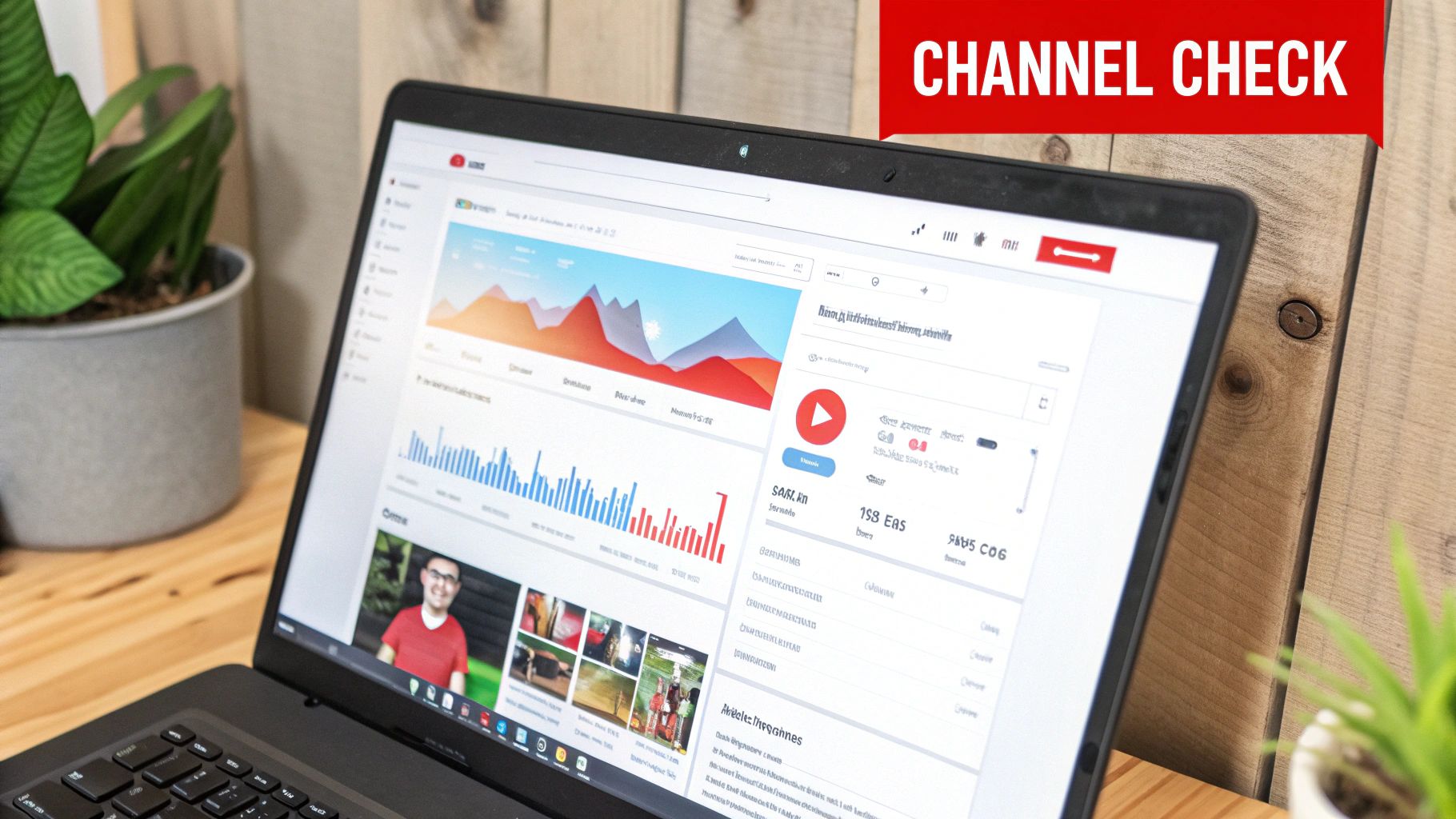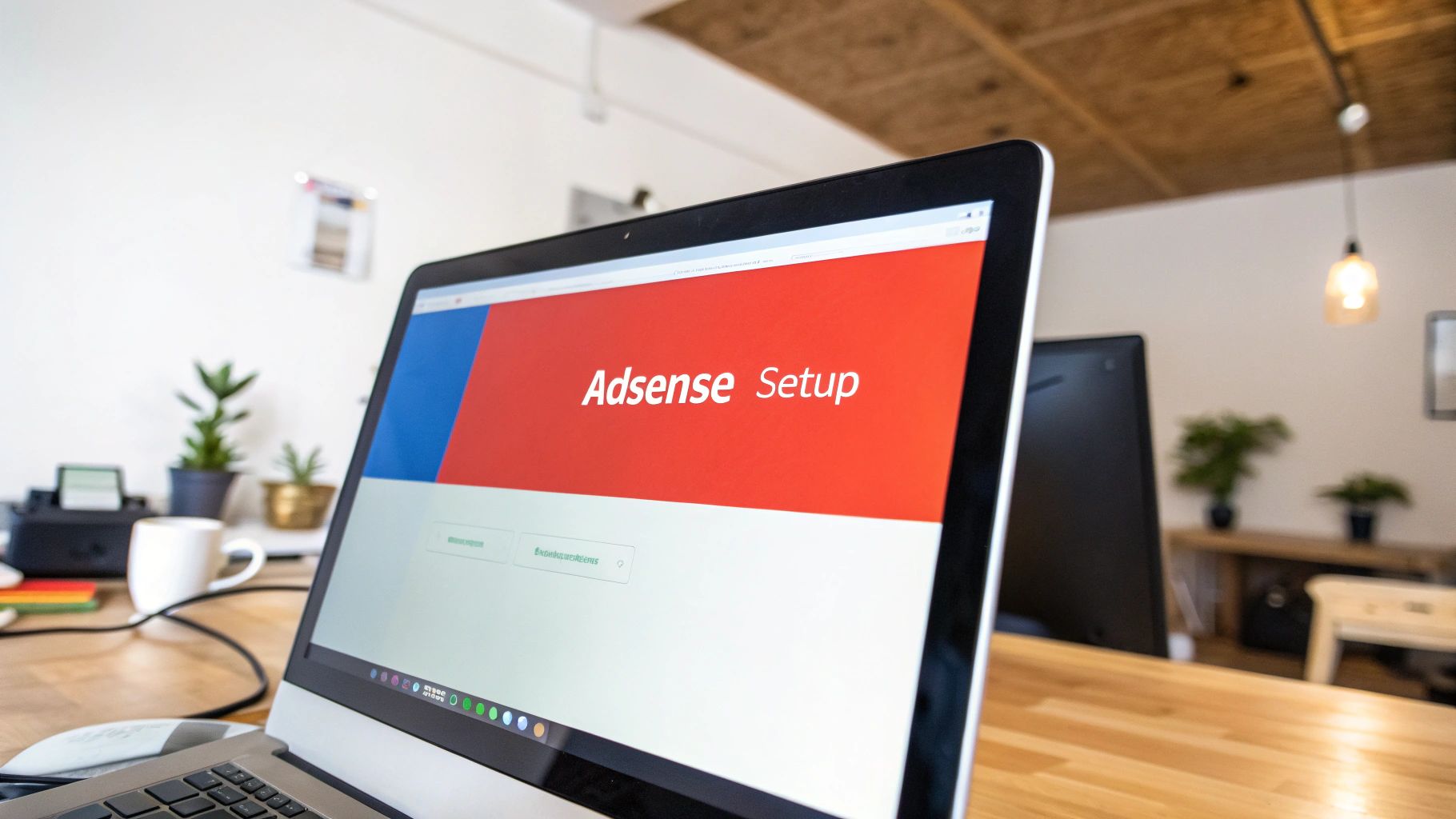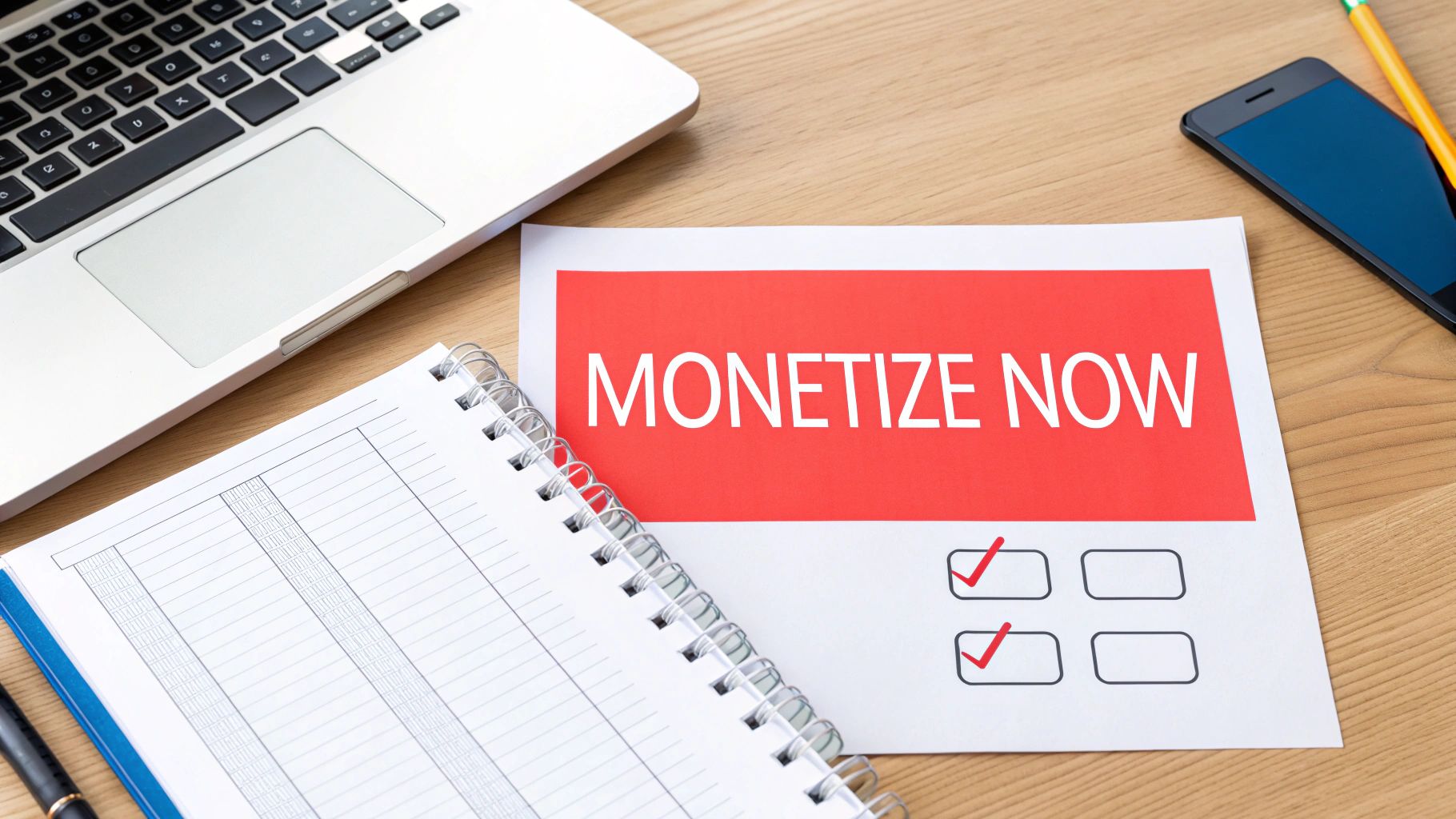Meeting the YouTube Partner Program Thresholds
Earning money on YouTube through the YouTube Partner Program (YPP) is a dream for many creators. The program offers several ways to earn, such as ad revenue, fan funding, and sponsorships. However, joining isn't automatic. There are YouTube monetization requirements you must meet first. These requirements ensure that only committed creators can access the program, creating a more professional environment for everyone. This also assures advertisers that their ads are reaching engaged viewers. For those looking to speed up their monetization journey, purchasing pre-monetized accounts from vendors like monetizedprofiles.com is an option.
Understanding the Core Requirements
The YPP has two sets of requirements: one for fan funding and one for ad revenue. For fan funding, which includes features like Super Chats, Super Thanks, and channel memberships, you need 500 subscribers, three public uploads in the last 90 days, and either 3,000 public watch hours in the past 12 months or 3 million public Shorts views in 90 days. These are less strict than the ad revenue requirements, allowing creators to start monetizing earlier through direct audience support.
If you want to earn through ad revenue, the requirements are more demanding. You’ll need 1,000 subscribers and 4,000 valid public watch hours in the last 12 months, or 10 million public YouTube Shorts views in the last 90 days. These higher thresholds, introduced in January 2018, were designed to increase the platform's credibility and ensure ads reach a substantial audience, benefitting both advertisers and users. Find more detailed statistics here.
To help illustrate these requirements, the following table summarizes the key criteria for the YouTube Partner Program:
YouTube Partner Program Eligibility Requirements
Requirement Type |
Minimum Threshold |
Measurement Period |
Notes |
|---|---|---|---|
Fan Funding |
|||
Subscribers |
500 |
- |
|
Public Uploads |
3 |
Last 90 days |
|
Public Watch Hours OR Public Shorts Views |
3,000 hours OR 3 million views |
12 months OR 90 days |
|
Ad Revenue |
|||
Subscribers |
1,000 |
- |
|
Public Watch Hours OR Public Shorts Views |
4,000 hours OR 10 million views |
12 months OR 90 days |
This table clearly shows the different paths available for monetization on YouTube and the specific thresholds creators must meet. The higher requirements for ad revenue demonstrate YouTube's commitment to providing a valuable platform for advertisers.

What Happens After You're Accepted?
Once you're in the YPP, you don’t have to reapply if your subscriber or watch hour count changes. If you joined with 500 subscribers and 3,000 watch hours, but later hit 1,000 subscribers and 4,000 watch hours, you won’t need to reapply. You’ll just unlock more features, like access to ad revenue tools. This gives creators stability and encourages consistent content creation.
Looking Beyond the Numbers
Reaching the subscriber and watch hour goals is a big step, but it’s not the only one. YouTube also reviews channels for quality and adherence to their community guidelines. Content originality, consistency, and audience engagement are all important factors in the review. This emphasizes the importance of building a strong community and creating engaging, high-quality content. This approach will help you achieve long-term success on YouTube.
Creating Advertiser-Friendly Content That Converts
Reaching the subscriber and watch hour milestones for YouTube monetization is a big step. But earning consistent revenue takes more than just hitting those numbers. Your content needs to follow YouTube's advertiser-friendly content guidelines. This means understanding YouTube's sometimes complex Community Guidelines and advertiser-friendly policies. For instance, content with violence, hate speech, or harmful misinformation could put your monetization status at risk.
Understanding YouTube's Content Policies
YouTube's monetization policies go beyond watch hours and subscribers. Creators also need to stick to YouTube's Community Guidelines, Terms of Service, and advertiser-friendly content policies to stay eligible for monetization. Content that breaks these policies, like inappropriate or misleading material, can lead to suspended or terminated monetization. This focus on quality and responsible content creates a safer environment for both viewers and advertisers. Recent policy updates have also clarified what counts as repetitious and reused content, further defining the rules for monetization. Learn more here. Even after you've met the initial requirements for YouTube monetization, following these guidelines is crucial for continued success.
Content Categories That Often Trigger Demonetization
Some types of content are more likely to cause demonetization. These include:
-
Controversial Topics: Videos covering sensitive political or religious issues.
-
Explicit Content: Content that includes violence, profanity, or sexually suggestive material.
-
Harmful or Dangerous Activities: Videos promoting dangerous stunts or offering misleading medical advice.
-
Reused Content: Uploading content made by someone else or overusing your own content.
Knowing these categories helps creators plan their content strategically.
Creating Engaging, Compliant Content
Creating advertiser-friendly content doesn't mean you have to sacrifice your unique style. It’s about balancing audience engagement with YouTube's guidelines. Here are a few ways to do that:
-
Careful Topic Selection: Choose interesting topics while avoiding controversial subjects.
-
Appropriate Language: Use respectful language and avoid profanity.
-
Content Warnings: Include warnings for videos with potentially sensitive content.
-
Regularly Reviewing Policies: Stay informed about changes to YouTube's guidelines.
YouTube's Review Process
YouTube uses both automated systems and human reviewers to check if content is eligible for monetization. Automated systems scan for possible violations. Human reviewers give a closer look at the context and intent of the content. This combined approach helps make sure the monetization process is fair and accurate. Even seemingly minor violations can be flagged, so it’s important to review your content carefully before submitting it for monetization. Addressing any potential issues beforehand can improve your chances of approval and help you keep a steady ad revenue stream.

Navigating Geographic Revenue Disparities
Earning through the YouTube Partner Program isn't just about views and subscribers. A critical factor often overlooked is the geographic location of your audience. This impacts your Revenue Per Mille (RPM), which represents the revenue you generate per 1,000 views.
Even if two creators have the same number of views, their earnings can differ significantly based on where their viewers are located. This isn't simply a matter of chance; economic factors play a crucial role in these disparities.
Understanding RPM and Its Regional Variations
RPM is a key metric for understanding your YouTube earnings. It reflects the advertising rates paid by businesses targeting specific regions. For example, regions with higher advertising demand and stronger economies tend to have higher RPMs.
Conversely, regions with lower advertising spending and weaker economies typically have lower RPMs. This means a creator with an audience primarily in a high-RPM region can earn significantly more than a creator with a similar viewership in a low-RPM region. This underscores the importance of understanding your audience demographics and how they influence your monetization potential.
Let's take a look at the following table to further illustrate these regional differences:
YouTube RPM Rates by Region
Comparison of average revenue per mille rates across major geographic markets
Region |
Average RPM |
YoY Change |
Viewer Demographics |
|---|---|---|---|
USA |
$11.03 |
Decrease from $11.97 in 2024 |
Primarily English-speaking, high disposable income |
Canada |
$8.50 |
Slight Increase |
Mix of English and French speakers, strong economy |
UK |
$7.25 |
Stable |
Primarily English-speaking, developed economy |
India |
$2.50 |
Significant Increase |
Diverse languages, rapidly growing digital market |
Brazil |
$1.75 |
Moderate Increase |
Primarily Portuguese-speaking, developing economy |
As you can see, the RPM varies significantly by region. The USA still commands a high RPM, even with a slight year-over-year decrease. Emerging markets like India and Brazil are experiencing growth, reflecting the increasing digital adoption in these regions. Understanding these trends is crucial for optimizing your content strategy.
YouTube's monetization landscape also varies significantly by region. Furthermore, the rise of short-form content, such as YouTube Shorts, now makes up approximately 20% of the platform's total video count, offering creators new avenues for engagement and potential revenue streams. Find more detailed statistics here.
Strategies for Maximizing Revenue Across Regions
While you can't directly control viewer location, you can adopt strategies to maximize revenue despite regional RPM limitations. One approach is content adaptation. This involves creating content that resonates with diverse audiences while staying true to your brand.
For example, using subtitles or dubbing your videos can make them accessible to viewers in different languages and regions. Additionally, incorporating cultural references or tailoring your content to specific regional interests can attract a wider audience and potentially increase your RPM.
Identifying and Targeting High-Value Geographic Audiences
Another strategy is focusing on building an audience in higher-RPM regions. This doesn't mean abandoning your existing viewers, but rather exploring ways to expand your reach into more lucrative markets.
For example, researching trending topics or popular niches in high-RPM regions can help you create content that attracts viewers from those areas. Collaborating with creators from those regions can also expose your channel to a new audience and boost your visibility.
However, it's crucial to balance this targeted approach with creating authentic content that genuinely engages your viewers. Compromising content quality for higher RPMs can damage your channel's reputation and ultimately hinder your long-term success. By understanding and navigating geographic revenue disparities, you can optimize your YouTube monetization strategy and reach your full earning potential.

Building Revenue Streams Beyond AdSense
Savvy creators know that depending only on AdSense revenue from the YouTube Partner Program (YPP) can be risky. Algorithm updates, policy changes, and fluctuating ad rates can significantly impact income. Therefore, diversifying your revenue is crucial for long-term YouTube success. This means exploring options beyond the standard YouTube monetization requirements for AdSense and building a multi-faceted business.
Expanding Your YouTube Monetization Toolkit
Even while working towards the YPP requirements, or after achieving them, you can explore other monetization features offered by YouTube. These options offer direct ways to connect with your audience and make money:
-
Channel Memberships: This lets dedicated fans support your channel with monthly recurring payments. They get exclusive perks like badges, emojis, and members-only content. This creates stable income and a stronger community.
-
Super Chat & Super Stickers: During live streams, viewers can use Super Chat and Super Stickers to highlight their messages in the chat. This increases their visibility and supports your channel. It's an engaging way to interact with your audience during live events.
-
Merchandise Shelf: With a substantial and engaged following, you can add a merchandise shelf to your YouTube channel page. This lets fans easily buy branded merchandise, creating a new revenue stream and strengthening your brand.
Exploring Off-Platform Revenue Opportunities
Building a successful creator business often means looking beyond YouTube's built-in monetization. This means expanding into off-platform opportunities that complement your YouTube content:
-
Affiliate Partnerships: Partner with relevant brands to promote their products or services. You can use affiliate links in your video descriptions to generate passive income. This works best when you recommend products you use and believe in, maintaining audience trust.
-
Sponsored Content: Working with brands to create sponsored videos offers significant revenue potential. However, be transparent with your audience. Ensure the sponsored content aligns with your channel's values and resonates with your viewers.
-
Fan Funding Platforms: Platforms like Patreon let your audience directly support your work. They can do this through monthly subscriptions or one-time donations. This provides financial stability, separate from YouTube's ad revenue, and fosters a deeper connection with your fans.

Building Sustainable Brand Partnerships
Successful brand partnerships are built on strong relationships. Networking with brands in your niche, attending industry events, and engaging with potential partners on social media can lead to great opportunities. Clearly defining your target audience, showing your channel's value, and creating a professional media kit can make you a desirable partner.
When negotiating sponsored content deals or affiliate partnerships, know your worth. Setting appropriate pricing is essential. Research industry standards, consider your audience demographics and engagement rates, and clearly communicate your value to potential partners to ensure fair compensation. By diversifying your income and strategically building brand relationships, you can create a sustainable and successful creator business that isn't solely reliant on YouTube ad revenue. This approach offers greater financial stability and allows you to focus on creating quality content that resonates with your audience.
Crafting High-RPM Content That Viewers Actually Want
Getting your YouTube channel monetized is a great first step. But if you want to earn serious revenue, you need a smart content strategy. This means understanding high-RPM (Revenue Per Mille) content and how to make videos that appeal to both viewers and advertisers. Finding this balance is key for long-term success on YouTube.
Identifying High-RPM Niches and Topics
Some niches naturally attract advertisers who are willing to pay more. Finance, technology, and business content often have higher RPMs than entertainment or lifestyle videos. This is because advertisers in these niches want to reach an audience with higher spending power. But just picking a high-RPM niche isn't enough. You also need to find specific topics within that niche that viewers are interested in.
Think about the time of year, too. Some topics perform better during certain seasons. Back-to-school content usually does well in late summer, while holiday gift guides are popular in November and December. Knowing these seasonal trends can help you take advantage of peak advertising spending.
Video Formatting for Optimal Ad Placement
How you format your videos can affect ad placement and how long people watch. Longer videos (over 8 minutes) usually allow for more mid-roll ads, which can boost your earnings. But just making longer videos isn't the answer; your content still needs to be interesting. Think about incorporating elements like storytelling, clear visuals, and a good pace to keep viewers engaged.
Balancing Trending and Evergreen Content
A good strategy is to balance trending topics with evergreen content. Trending content can bring a lot of views and revenue quickly, but it can become less popular just as fast. Evergreen content, on the other hand, stays relevant and valuable over time, creating a steady income stream.
By mixing both types of content, you can generate revenue consistently throughout the year. This means understanding how to use current trends while also making videos that people will want to watch for a long time.
Building Audience Trust While Maximizing Revenue
There's more to monetizing your YouTube channel than just focusing on high RPMs. It's also about making quality content that your audience enjoys and trusts. While it’s important to choose topics that attract advertisers, it shouldn't compromise your channel’s integrity or your audience's trust.
Authenticity is essential. Promote products or services that you actually believe in. Be honest with your viewers about sponsored content. By building real connections with your audience, you can create a loyal following that supports your channel and helps you earn more. This long-term approach builds a stronger community and leads to lasting success on YouTube.
Protecting Your Monetization Privileges Long-Term
Achieving monetization on YouTube is a big step, but keeping it requires constant effort. Losing that monetization can be a huge setback, so it’s important to be proactive. This section explores common pitfalls that can lead to demonetization and offers strategies to protect your YouTube revenue stream. Think of your monetized channel as a garden – consistent care is essential for it to thrive.
Common Mistakes That Lead to Demonetization
Several missteps can put your YouTube monetization status at risk. Understanding these common errors is the first step in protecting your earnings.
-
Copyright Infringement: Using copyrighted material without permission, even by accident, is a frequent cause of demonetization. This includes music, video clips, and even images.
-
Community Guidelines Violations: Breaking YouTube’s Community Guidelines, such as posting hateful content or promoting violence, can result in penalties, including demonetization.
-
Misleading Metadata: Using misleading titles, tags, or descriptions to trick search results can trigger penalties. This includes keyword stuffing or using irrelevant tags.
-
Ignoring Policy Updates: YouTube's policies change, so staying informed is crucial. Failing to adapt to new rules can accidentally lead to violations and demonetization.
Systems for Maintaining Compliance
Putting systems in place to maintain compliance can greatly reduce your demonetization risk. These strategies help keep your channel running smoothly.
-
Copyright Management: Use royalty-free music and visuals, or get the proper licenses for any copyrighted material. Double-check your content for potential copyright issues before uploading.
-
Content Review Process: Implement a thorough review process before posting videos. Check for compliance with Community Guidelines and advertiser-friendly content policies.
-
Regular Policy Check-Ups: Regularly review YouTube’s policies. Stay informed on any changes to avoid accidental violations. Consider subscribing to official YouTube channels or blogs for updates.
Handling Strikes and Claims
Even if you take preventative measures, you might encounter copyright claims or community guideline strikes. Knowing how to handle them is crucial.
-
Understanding the Difference: A copyright claim typically involves using copyrighted material. A community guideline strike relates to content that violates YouTube's rules. Each requires a different response.
-
Responding to Claims: If you get a copyright claim, you can dispute it if you think it's wrong. You can also remove the copyrighted material or try negotiating with the claimant.
-
Addressing Strikes: If you get a strike, review the reason carefully. If you think it’s wrong, you can appeal. If it’s valid, take steps to avoid similar violations in the future. Multiple strikes can lead to channel termination.
This proactive approach is like regular car maintenance – fixing small issues before they become big problems. By using these strategies, you can protect your monetization and build a lasting presence on YouTube. Maintaining compliance takes ongoing work, but a consistently monetized channel is worth the effort. This approach lets you focus on what matters most – creating great content for your audience.








